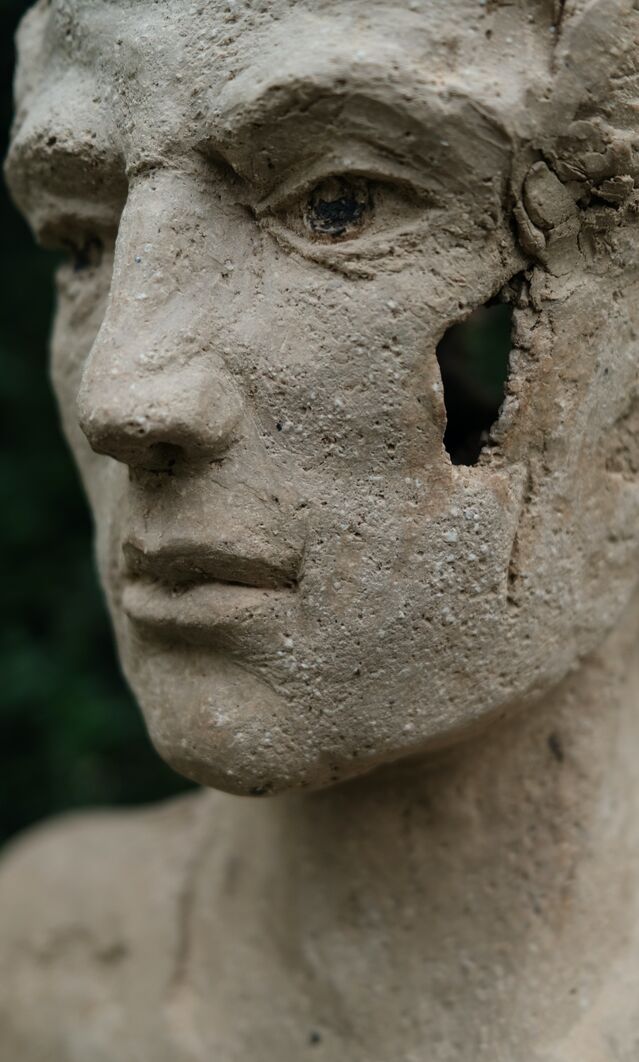Intelligence
Why Are People Biased Against Anomalous Facial Features?
What occurs in the brain when we harbor negative attitudes towards people.
Posted March 16, 2021 Reviewed by Abigail Fagan
- People tend to have biases toward those with atypical facial features, such as scars or birthmarks.
- New research finds that people often perceive anomalous faces as less trustworthy, less content, and more anxious. Brain scans showed that the amygdala and fusiform gyri play a role in these perceptions.
- Understanding these biases may help to alleviate social challenges that people who look different can experience.

This post was co-authored by Clifford I. Workman, Ph.D.
We all harbor biases. The recent Me Too and Black Lives Matter movements have highlighted the pervasive and poisonous effects of such biases when expressed through negative stereotypes and discriminatory actions.
Apart from the well-researched biases found in gender and race studies, we find that people express negative attitudes towards people with visible facial differences like scars and birthmarks—an effect we have dubbed the “anomalous-is-bad” stereotype. We refer to visible differences as “anomalies” to avoid reifying negative associations with the term disfigurement. The anomalous-is-bad stereotype is complementary to the “beauty-is-good” stereotype, which describes the tendency to prefer and to think more highly of attractive compared to average-looking people (Dion et al., 1972).
We have shown that people expect worse character traits from people with facial anomalies (e.g., less trustworthy, and less emotionally stable) before corrective surgery than after (Jamrozik et al., 2019). People also express negative implicit attitudes about anomalous faces, and brain reactions to visible differences occur in areas associated with dehumanization (Hartung et al., 2020). Could dehumanization be to blame for the expression of the anomalous-is-bad stereotype in explicit and implicit attitudes?
Facial Anomalies in Everyday Life and the Media
People don’t encounter facial differences very often in everyday life, which is probably because anomalies are present in about 1 of every 100 people (Julian & Partridge, 2008). People even go out of their way to avoid interacting with people who look different (e.g., Houston & Bull, 1994). As a consequence, most people with typical faces have limited opportunities to form impressions about people with anomalous faces, whether positive or negative.
We might expect such impressions to be negative, though, since facial anomalies are often used as visual shorthand for moral corruption in popular media (Croley et al., 2017). The writers of 2008’s The Dark Knight, for instance, instructed that the Joker be shown in “sweaty clown makeup [that obscures] the awful scars which widen his mouth into a permanent, ghoulish smile” (p. 26, ll. 22-23; Nolan & Nolan, 2008). Other examples—like Voldemort, Freddy Krueger, and Le Chifre—are easy to conjure up.
Perhaps most egregious of all is the messaging directed at young viewers of The Lion King that indicates “Scar” is synonymous with “bad guy.” While this cultural message likely amplifies the anomalous-is-bad stereotype, it may have its roots in traits that evolved to promote healthy mate selection and to steer people clear of risk for potentially communicable diseases. This mechanism might be why sometimes people express disgust in response to faces with visible differences.
The Cognitive Process that May Lead to Bias
In our recent publication in the Annals of the New York Academy of Sciences (Workman et al., 2021), we described two studies that examined reactions to anomalous faces in the brain (using fMRI scanning), behavior (in economic games), and attitudes (explicit and implicit). In the first study, we showed volunteers photographs of faces that were average-looking, attractive, or anomalous. We asked them to rate the faces along several dimensions. Compared to more attractive faces, participants thought anomalous faces were less trustworthy, less content, and more anxious. The anomalous faces also made viewers feel less happy.
In the second study, participants acknowledged harboring “explicit bias” against people with visible differences, which was reflected in negative expectations about people with anomalous faces as a group. Also in the second study, we examined the anomalous-is-bad stereotype in dispositions, behaviors expressed during simulated social interactions, and fMRI-measured brain responses.
Using fMRI, we detected neural responses in the amygdala and the fusiform gyri that were specific to anomalous faces. In other words, activity in these regions that link emotion and vision was sensitive to disgust. Interestingly, activity in the left amygdala was sensitive to disgust towards animals but not disgust towards bodily injuries; an observation that is consistent with the proposal that dehumanization underpins the anomalous-is-bad stereotype. This activity correlated with less prosocial behavior towards anomalous faces as determined by the willingness to share resources in a well-known economic game, the Dictator Game.
Amygdala activity also correlated with participants’ beliefs about justice in the world (e.g., that people get what they deserve) and their capacities for empathic concern. Based on these results, we think that the left amygdala mediates the anomalous-is-bad stereotype by integrating face perception with moral emotions (disgust and empathy) and social values (just world beliefs) to allow the dehumanizing of people with facial differences.
How can we resist succumbing to the anomalous-is-bad stereotype in everyday life? Ultimately, we hope that our findings will inform future outreach, education, and intervention aimed at alleviating the social penalties experienced by people who look different.
References
Croley, J. A., Reese, V., & Wagner, R. F. (2017). Dermatologic features of classic movie villains. JAMA Dermatology, 153(6), 559. https://doi.org/10.1001/jamadermatol.2016.5979
Dion, K., Berscheid, E., & Walster, E. (1972). What is beautiful is good. Journal of Personality and Social Psychology, 24(3), 285–290. https://doi.org/10.1037/h0033731
Hartung, F., Jamrozik, A., Rosen, M. E., Aguirre, G., Sarwer, D. B., & Chatterjee, A. (2019). Behavioural and neural responses to facial disfigurement. Scientific Reports, 9(1), 8021. https://doi.org/10.1038/s41598-019-44408-8
Houston, V., & Bull, R. (1994). Do people avoid sitting next to someone who is facially disfigured? European Journal of Social Psychology, 24(2), 279–284. https://doi.org/10.1002/ejsp.2420240205
Jamrozik, A., Oraa Ali, M., Sarwer, D. B., & Chatterjee, A. (2019). More than skin deep: Judgments of individuals with facial disfigurement. Psychology of Aesthetics, Creativity, and the Arts, 13(1), 117–129. https://doi.org/10.1037/aca0000147
Julian, D., & Partridge, J. (2008). The incidence and prevalence of disfigurement. https://www.changingfaces.org.uk/wp-content/uploads/2016/03/FE-Campaign-Epidemiology-2-pages.pdf
Nolan, J., & Nolan, C. (2008). The dark knight (pp. 1–141). Warner Bros. Pictures.
Workman, C. I., Humphries, S., Hartung, F., Aguirre, G. K., Kable, J. W., & Chatterjee, A. (2021). Morality is in the eye of the beholder: The neurocognitive basis of the “anomalous‐is‐bad” stereotype. Annals of the New York Academy of Sciences, nyas.14575. https://doi.org/10.1111/nyas.14575




